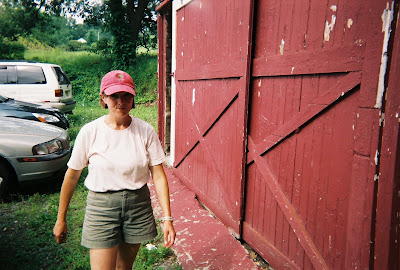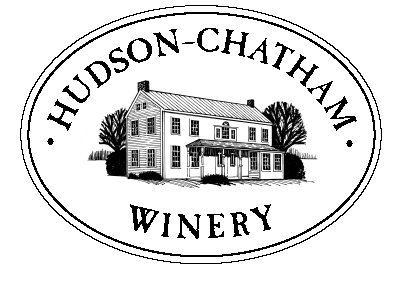From the time I first saw it, first tried to budge its rusted doors, and saw the massive pile of junk, trash, and cut-down birch mounted high behind it, I knew this little barn of ours would be a challenge in and of itself. To top it off, I was sure I could do it alone in one weekend.
Our bigger barn is not all that big by country standards, and is much smaller than others we had seen in our search for the perfect farm.
Still, as I contemplated working on it, it could not have seemed more iconic, layer-painted the traditional dark red, its walls and sills were peeling badly, revealing a century’s worth of coatings, from white, to green, to red, and back again. I saw rotted wood, blacked-out windows, and a self-destructing chimney towering from the back. It loomed large in my psyche, as large as Everest or K-2 in my little myopic, suburban mind. It was to be fixed. To be conquered.

Days 1 & 2
Firstly, I hired some barn restoration folks to fix the front doors. This was a job way beyond my personal experience, and would definitely be a two-man or more job, what with the doors themselves needing repair, and the broken track also needing replacing.
Trying to open these doors in the beginning, you needed Arnold Schwarzenegger. I felt like Victor Mature in Sampson and Delilah trying to separate the edge of the first door from the barn wall.
Then they came. Two kids, a man and a woman, using the trunk of their used Firebird as a ladder. Behind the broken track lay rotted-out beams. A day and a half’s work and they were done. The doors now both opened, and with ease.
Even though I hadn’t done more than strenuously lift up my checkbook to pay these fine folk, I felt like I had accomplished the parting of the Red Sea, and I paraded around with great glee at how I had returned the barn’s working doors to how they had been back in the days of yore.
I proudly presented them to the family. I was like a two-year-old who had just made potty for the first time, my chest out, my chin high, like Patton beating Montgomery to Messina.

My wife was polite. She pecked me on the cheek and delicately turned back to the vineyard to continue the real work among the vines. She was being nice, since she had questioned from the very beginning how come we were spending this much money on the barn, when the real money should be spent on the care of the vineyard plants and the interior of our home, which dearly needed tender loving care. Or wouldn’t all that lovely cash, better yet, still be more useful tucked into our savings account?

My two boys were more effusive. They rolled their collective eyes and both said "boor-ing!", waved their hands in disgust, before they too turned away, leaving me alone with my half-completed Pieta of a barn.
I would show them, I thought. When it’s painted and returned to its full former glory, then, then would I reap the accolades due me, and due my barn. Now, I must acknowledge right here that in farm country, acknowledged or not, people look at each other’s barns. The bigger the barn, the more respect. The nicer kept your barn is, the more attention it gets.
Barns are, for lack of a better word, like the tractors, the trucks, one of the ways people judge one another in the farm world. This is what I was thinking.
What I didn’t really stop to think was that who I was really playing to weren’t the farmers—who couldn’t care less—as long as their barn is standing and does what it’s supposed to do.
Who I was really wanting to make a statement to were my neighbors—show them that we were here for a reason—we were here for good. We were here to make something of the place. But I was too blind to see it then.
I was too blind until I proudly showed the new working doors to Ralph.
"Ralph, look," I said one day, proudly showing him the barn like some yuppie male version of Vanna White or Carol Merrill. "Now both doors work!" I announced proudly, like a father showing off his first barn, smile a mile wide across his face. "When’s the last time both these suckers moved open and closed like this?" I said, pride swelling.
Ralph shrugged, completely unmoved. "Not since I was alive. Doors’ve been like that since before me." Unimpressed, he too moved on to tend to more important work out in the fields.
Stupidly, I was not affected—and forged ahead.
Days 3, 4, and 5
I sized up the barn, taking copious notes, and proceeded to collect all the measurements I required. And then I went to the local lumber yard and purchased almost $400 worth of wood.
I sat and hammered, pried loose and replaced dozens of planks, overlaid sides and corners, and generally replaced as much as I could.

Then came the caulk. The barn had as many holes in it as one could possibly imagine. Every small creature known to man, at one time or another, had made use of this animal condominium.

If it were an apartment complex it would have been called Forrest Friends Winter Retirement Community.
Armed with a case of caulk, I proceeded to attack the barn. I clogged up every peephole I could find.
Sisyphus or Prometheus had no more noble cause than I did. And I might say, while I failed miserably, in the end I did clog about three-fourths of the holes and cracks I found. But, outmatched, I again relented, and sought outside assistance.
I hired Andy, who had started working on the inside of the house with us. He too started caulking to no avail, eventually succumbing to the same deadening experience as I had. And at length, we both called a truce with the barn on this level.
It is important to add that the longer we all worked on the barn, the better and better the summer grew. At the high point, we were in bright sunshine with temperatures in the high 90s. It felt like we had joined the French Foreign Legion. It was also at this time that Mad Matt assisted, putting up screens in the place of blown-out windows, in order to keep out further borders from the natural world, to complete our own attempted cleansing.

Days 5, 6, and 7
But Andy was here to help me with something else. The most difficult part was now approaching. Scraping off the paint. The scraping of the barn was the most boring, simply the most monotonous, grueling, thankless part of tackling the farm.
Fifty percent of the peeling multi-colored/layered chips fell off easily after one pass.
The next twenty percent fell off with two or three more swipes. And the last ten percent we took off seemed to take forever. We left some paint which we could not get off no matter how hard we tried, as we figured, if it wasn’t coming off now—it wasn’t coming off any time soon.
Days 8, 9, 10, and 11
Now we were ready to paint, and I asked Andy to help me with the primary coat. I wanted the paint put on by hand. I wanted deep penetration into the wood—I wanted it done by hand with a brush.
In the baking sun, at the high point of the afternoon, it seemed like the paint was drying as we were wiping it on, the walls of the barn were so hot. We dabbed, struck, poked, wiped, slapped, stabbed, and generally whacked that barn with our brushes until we had covered every spot on three sides of the barn.
My wife was upset. I was repainting the barn white to match the house, where she wanted it to remain red. But if we had painted the blending room white, and the new building was going to be white, and the house was white, I felt the barn should also match. She relented more than she agreed. Again, she rolled her eyes and went back to the vineyard.
Then, by myself, I began applying the second coat. A former house painter for five summers, I very much wanted the barn to look just so.
As fate would have it, a friend, Chris Terry, a fellow publishing professional, and a longtime friend, with whom I used to paint apartments back in our salad days, arrived like the cavalry, and we added the second coat in two days.

The irony here is that I went out to finish the barn’s trim the morning after. Rain had been predicted for the afternoon. I went out early and finished by 10:00 a.m.—just as the first rain drops began to fall. It was a very sudden summer shower. Bright and sunny one minute, pouring the next.
The next morning I started out early—with my wife and children and dogs still asleep, and repainted the doors where the rain had washed away some or all of the paint.
A few days later, I added some lights on either side, and voila, the barn sure was done—except for the large red wall out the back.

Day 12
I must digress here and note that halfway through the process we rented the second of two dumpsters we used to clean out the property.
The pile out back had built up for years. Chains, tractor parts, pieces of pipe, a bathroom sink, an old rusted out brass bed head board all combined with trash was slowly and methodically moved to the dumpster located not too far from the left side of the barn.
But it was still almost a month before we moved the large pile of brush we ourselves had contributed to.
Consolidated, this rubbish and pile of cuttings, had meant planting a ladder for the purposes of painting was impossible. It would be at least another month before the barn was finished on the back side.















